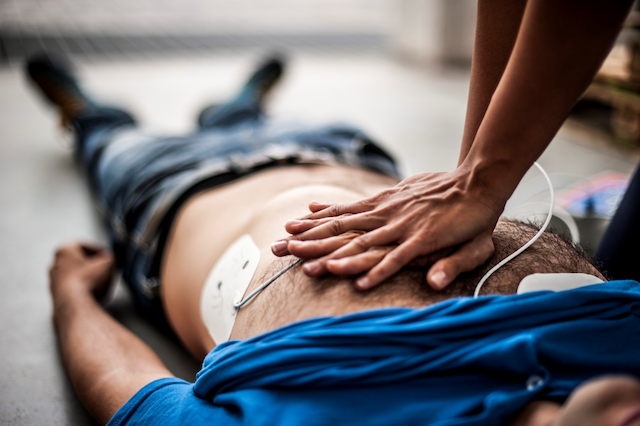
Former Wiggle Murray Cook stated on 2gb radio just 2 days after the incident “He’s doing really well, he was making jokes and he’s smiling.” “To go from pretty much his heart stopping, stopping breathing, to that in just a couple of days is such a testament to all the people that helped bring him back.”
NSW Ambulance Commissioner Dr Dominic Morgan speaking with Alan Jones on 2gb says all large venues and businesses should invest in one, highlighting just how integral they are to saving lives.
“They’re safe to use. They can’t possibly go wrong. “All the evidence tells us that it does best if community groups buy these things, own these things, train, work together and save lives.”
Important statement from Greg Page Feb 7,2020
Alan Jones and Dr. Dominic Morgan –</h2
Nearly 100 Australians die every day from sudden cardiac arrest. This includes kids, teenagers & fit people.
Statistically, Sudden Cardiac Arrest strikes approximately 30,000 Australians each year. With only around 6% survival rate because help cannot reach them in time.
.
Defibrillators are easy to use and fully automated so the risk of doing something wrong is near to impossible. Contact any of our team – details on the bottom of our newsletter.
Frequently asked questions
What is Sudden Cardiac Arrest (SCA)?
A Sudden Cardiac Arrest is a condition that occurs when the heart unexpectedly stops pumping. Each year, SCA strikes approximately 30,000 Australians. Unfortunately, around 6% survive, often because help cannot reach them in time. The average ambulance response time is between 9-14 minutes. SCA is not gender or age specific!
What are the benefits of using a defibrillator during a SCA?
Without defibrillation, for every minute that passes, the chance of survival is reduced by 10%. Application of pads on a patient within 180 seconds increases the survival rate to over 70%. With good CPR & a defib up to 90% survival rate.
If defibrillation is so important, why should I do CPR?
CPR provides some circulation of oxygen-rich blood to the victim’s heart and brain. This circulation delays both brain death and the death of heart muscle. CPR also makes the heart more likely to respond to defibrillation.
When is a defibrillator used?
If a person is not breathing, resuscitation (CPR) should be commenced. A defibrillator should be applied whenever CPR is performed. If the person is breathing, regardless of whether they are responsive (conscious) or not responsive (unconscious), a defibrillator is not required.
How does a defibrillator work?
A defibrillator delivers a set amount of electrical shock to the heart after it analyses the heart rhythm. It determines whether a shock is required to the heart via adhesive electrode pads attached to the person’s chest. The shock delivered by a defibrillator interrupts the chaotic rhythm of the heart and gives the heart the chance to return to its normal rhythm.
Who can use a defibrillator?
Anyone can use a defibrillator – it is just a matter of following the voice prompts provided by the unit. However, training is recommended to give the user greater confidence. We provide an online CPR & Defib course free with every defib.
Do I have to be a healthcare worker to use a defibrillator? No. A defib guides the user step-by-step through the defibrillation process with visual and voice prompts. The defib will not deliver a shock unless it detects a shockable rhythm, e.g. the heart is not beating regularly.
Can I shock a person accidentally?
No. The defib assesses the status of a person’s heart and will not shock a normal heartbeat.